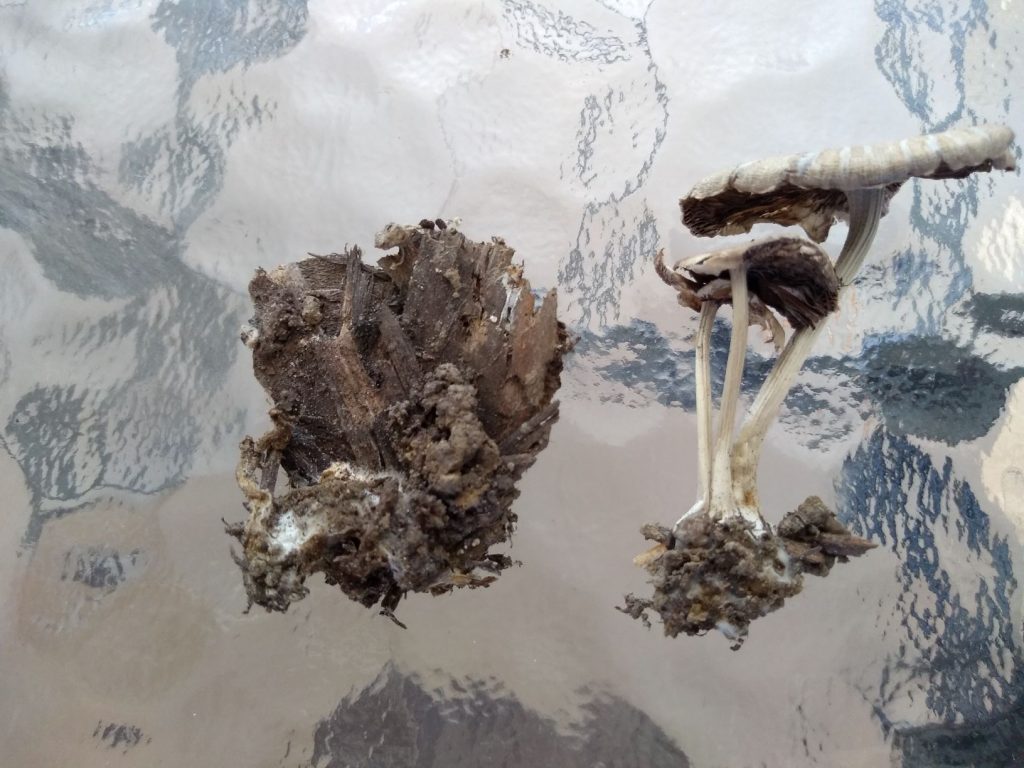
Hello!
In September 2020, I had a 50 foot long Eastern Cedar hedge planted by a professional company in my backyard. The hedge was planted in a 1ft x 1ft trench with soil/manure/fertilizer mix. The rest of the garden is clay. The company assured me that for the first year, the hedge will likely flag and it won’t look lush and green until the second season due to transplant shock.
Over the past month, I have been noticing some mushrooms growing both around the garden (among the grass in the middle of the garden) and around the base of the cedars. The cedars continue to flag, but I’m wondering whether these mushrooms are root rot or just standard mushrooms one would find around the garden. The roots of the mushrooms seem to stem from a white powder. I have removed them and attached a picture of one of them, along with a picture of a piece of mulch with the white powder. I have found that these mushrooms tend to grow off of the mulch that I put around the cedars.
While I have not been watering the cedars, I do find that my water meter consistently tells me they are “wet” or “damp”. The hedge has been planted in clay, and I’m concerned I’m dealing with root rot.
Bullet Point summary:
– Newly planted Eastern White Cedar Hedge (Sept. 2020 planting)
– Water Meter showing “wet” or “moist” most of the time
– Clay soil
– Flagging
– No signs of white scale on the tree
– Mushrooms emanating from white powder stuck to mulch at base of tree and throughout garden
– Newly established grass seed throughout garden which did require localized watering around the grass.
Does anyone know if this is root rot, or simply regular mushrooms combined with transplant shock? Any help would be greatly appreciated!
Thanks for your concern over your new hedge. Your questions concern the possibility of root rot which could be indicated by the presence of white powder and mushrooms growing at the base of the hedge which is mulched. And you mentioned your hedge was still ‘flagging’.
First, it is likely that the mushrooms and white powder (likely moulds) came with the mulch (1). Rake the mulch vigorously to disturb it, bringing the underneath parts up to the top. Or replace the mulch with new mulch (but the cycle will likely continue). At this point I don’t think the mushrooms are a firm indicator of root rot.
Secondly, it is difficult to tell whether or not your thuga occidentalis hedge is the “right plant for the right place”. White cedars like a sunny spot with well drained but moist soil. It sounds like the installers knew this and prepared a suitable trench. However you mentioned that you have not watered the hedge because the water meter indicated moist soil. A way to be sure that your arborvitae are watered sufficiently is found in reference 2.
If you have ongoing concerns I suggest you ask the installers to revisit your sight and assess the situation. good luck.
1.https://ag.umass.edu/landscape/fact-sheets/fungi-in-mulches-composts
2.https://www.torontomastergardeners.ca/askagardener/eastern-cedars-turning-brown/

